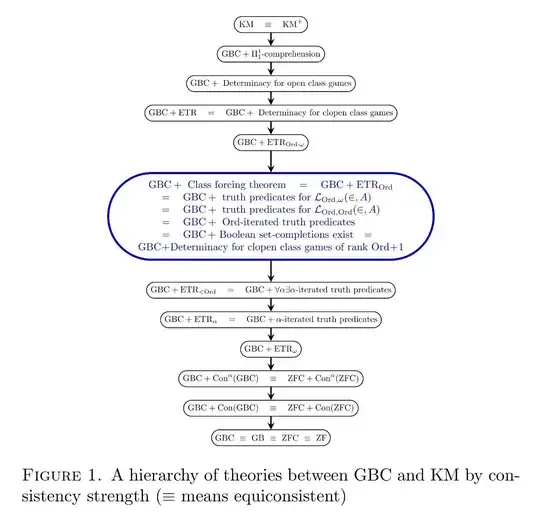I'm wondering if there are any recursion principles more general than the following, first given by Montague, Tarski and Scott (1956):
Let $\mathbb{V}$ be the universe, and $\mathcal{R}$ be a well-founded relation such that for all $x\in Fld\mathcal{R}$, $\{y:y\mathcal{R}x\}$ is a set. Further, let $\mathbb{F}$ be a function with $dmn\mathbb{F}=Fld\mathcal{R}\times\mathbb{V}$. Then there exists a unique function $\mathbb{G}$ such that $dmn\mathbb{G}=Fld\mathcal{R}$ and for all $x\in Fld\mathcal{R}$, $$\mathbb{G}(x)=\mathbb{F}(x,\mathbb G\restriction\{y:y\mathcal{R}x\}).$$
Specifically, I would like to be able to drop the requirement that $\{y:y\mathcal{R}x\}$ be a set. I am attempting to define by recursion a function on $O_n\times O_n$ ordered lexicographically, which is a well ordering and consequently a well-founded relation, however $\{y:y<(0,\alpha)\}$ is a proper class for all $\alpha>0$. The proof of the above theorem in the context of MK class theory (and even its statement) rely pretty explicitly on this not happening, however I am aware that category theorists often work in situations where they need to aggregate together many proper classes and manipulate them/construct morphisms between them.
Is there a (perhaps large-cardinal based) strengthening of this theorem that would allow one to legitimately make such a definition by recursion in a class-theoretical context?
